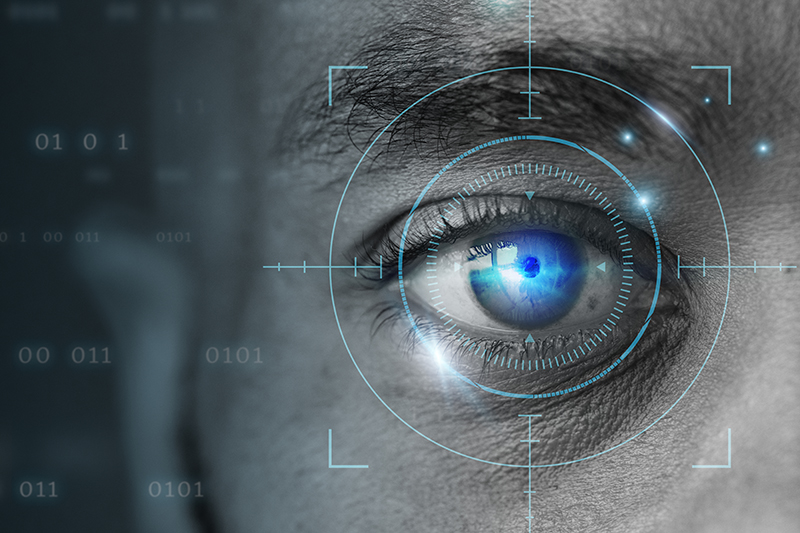
Rajeev Rajagopal
Tulsa, Tulsa
You have no groups that fit your search
Rajeev Rajagopal
1 year ago
ICD-10 Codes for Two Common Eye Disorders

Some eye problems occur with age, while others may be linked to other medical conditions. The article discusses two common eye conditions and their ICD-10 codes.
Eye problems can occur at any time and can cause great inconvenience and in severe cases, cause vision loss. While some eye problems occur with age, others may be linked to other medical conditions. Typically, many eye disorders don’t show symptoms in the initial stages and as a result, go unrecognized and ignored. According to reports, vision loss is among the top ten causes of disability in the United States in adults over the age of 18 and one of the most common disabling conditions in children. Early diagnosis and timely treatment can help reduce the risk if vision loss. Billing and coding for eye disorders can be challenging. Ophthalmologists treating different types of eye disorders need to ensure accurate medical billing and coding and clean claim submission. Partnering with a professional ophthalmology medical billing company can help physicians report their services correctly for maximum reimbursement.
Here are two common eye disorders and their ICD-10 codes –
Cataracts – Cataracts a common eye disorder and one of the leading causes of vision loss in the United States. The condition causes clouding of eyes lens, which blocks or changes the passage of light in to the eyes. The exact cause of the condition is not known. In most cases, cataracts develop when aging or injury changes the tissue that makes up the eye’s lens. Inherited genetic disorders, other eye diseases, past eye surgery and other medical conditions (like diabetes) also increase the risk of this condition. Symptoms include – blurred/glared/double vision, requiring frequent changes in eyeglass or contact lens prescription. Treatment involves surgical removal of the clouded lens, and replacing it with an artificial one. ICD-10 codes for cataracts include –
H25 - Age-related cataract
H25.0 - Age-related incipient cataract
• H25.01 – Cortical age-related cataract
• H25.03 – Anterior subcapsular polar age-related cataract
• H25.04 – Posterior subcapsular polar age-related cataract
• H25.09 – Other age-related incipient cataract
H25.1 - Age-related nuclear cataract
H25.2 - Age-related cataract, morgagnian type
H25.8 - Other age-related cataract
H25.9 - Unspecified age-related cataract
H26 - Other cataract
• H26.0 - Infantile and juvenile cataract
• H26.1 - Traumatic cataract
• H26.2 - Complicated cataract
• H26.3 - Drug-induced cataract
• H26.4 - Secondary cataract
• H26.8 - Other specified cataract
• H26.9 - Unspecified cataract
• H28 - Cataract in diseases classified elsewhere
Blepharitis –Blepharitis is inflammation of the eyelids. Also called lid margin disease, the condition affects both eyes along the edges of the eyelids. Inflammation of the eyelids can irritate the eyes and possibly affect the vision. There are two different types of blepharitis –anterior and exterior. Anterior eye inflammation occurs on the outside of the eye, whereas posterior eyelid inflammation occurs on the inner edge of eyelids. The exact cause of eyelid inflammation is unclear, but certain like – allergies and infections related to eye medications, contact lens solutions or eye makeup and infections may increase the risk of this condition. Symptoms include – red and watery eyes, oily/greasy eyelids, light sensitivity, itchy and swollen eyelids, flaking of the skin around the eyes, and eyelid sticking. Treatment includes a combination of self-care measures and steroid treatment and antibiotics. ICD-10 codes include –
H01.0 Blepharitis
H01.00 Unspecified blepharitis
• H01.001 …… right upper eyelid
• H01.002 …… right lower eyelid
• H01.003 …… right eye, unspecified eyelid
• H01.004 …… left upper eyelid
• H01.005 …… left lower eyelid
• H01.006 …… left eye, unspecified eyelid
• H01.009 …… unspecified eye, unspecified eyelid
• H01.00A …… right eye, upper and lower eyelids
• H01.00B …… left eye, upper and lower eyelids
H01.01 Ulcerative blepharitis
• H01.011 …… right upper eyelid
• H01.012 …… right lower eyelid
• H01.013 …… right eye, unspecified eyelid
• H01.014 …… left upper eyelid
• H01.015 …… left lower eyelid
• H01.016 …… left eye, unspecified eyelid
• H01.019 …… unspecified eye, unspecified eyelid
• H01.01A …… right eye, upper and lower eyelids
• H01.01B …… left eye, upper and lower eyelids
H01.02 Squamous blepharitis
• H01.021 …… right upper eyelid
• H01.022 …… right lower eyelid
• H01.023 …… right eye, unspecified eyelid
• H01.024 …… left upper eyelid
• H01.025 …… left lower eyelid
• H01.026 …… left eye, unspecified eyelid
• H01.029 …… unspecified eye, unspecified eyelid
• H01.02A …… right eye, upper and lower eyelids
• H01.02B …… left eye, upper and lower eyelids
Regular eye health appointments and eye exams can lead to early diagnosis. In fact, this is the key to correcting or slowing most eye conditions.
Accurate clinical documentation of symptoms, diagnoses, screening and other treatment procedures is crucial to ensure accuracy in coding and billing. Medical billing services provided by established billing and coding companies can ensure correct coding on the insurance claims.
0 likes · 0 comments
HealthDo you want to manage your own group?
